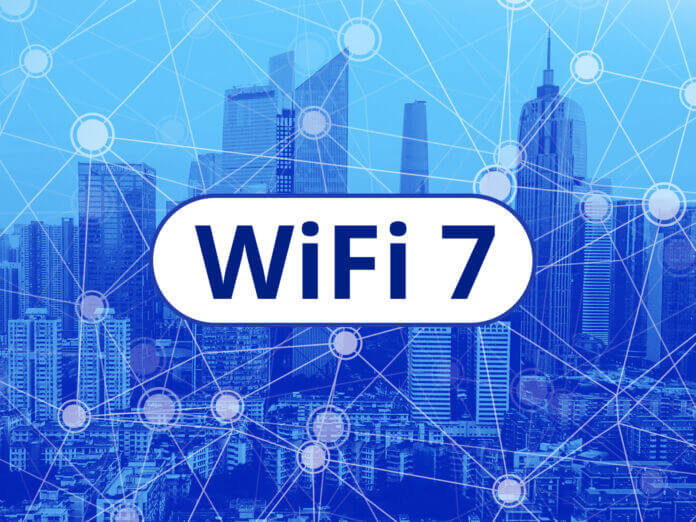
Eleanor Hecks – November 7, 2024
Collected at: https://www.iotforall.com/the-impact-of-wi-fi-7-on-the-future-of-iot
As technology continues to evolve, Wi-Fi 7 is set to revolutionize the landscape of wireless connectivity. Designed to support the increasing demands of connected devices in the Internet of Things (IoT) ecosystem, this latest advancement in wireless networking offers significant improvements over its predecessors.
Wi-Fi 7 promises faster speeds, improved bandwidth and better performance for various applications, paving the way for a more connected and efficient future.
What Sets Wi-Fi 7 Apart
Wi-Fi 7 — the newest evolution in wireless networking — brings considerable advancements over Wi-Fi 6. One of the standout features is its increased bandwidth. Wi-Fi 7 supports 320 MHz channels, double what Wi-Fi 6 can manage.
For homes with multiple smart devices, this expanded bandwidth ensures more than enough data to go around. This means users can connect more devices without sacrificing speed or experiencing interruptions. After all, internet speed is crucial in determining the effectiveness of IoT systems.
Another vital feature of Wi-Fi 7 is its support for 4K Quadrature Amplitude Modulation (4K-QAM), allowing higher data rates. This is particularly beneficial for streaming high-resolution video and other bandwidth-intensive applications, which are becoming increasingly common in households with IoT devices.
With 4K-QAM, users can achieve up to 20% faster speeds than Wi-Fi 6. Though these enhanced speeds can vary — for example, consumers must still follow proper router best practices like placing their router in a high, open space away from metal objects to prevent interference and ensure utmost efficiency — consumers can generally enjoy faster speeds that enhance the connected experience.
Enhanced Connectivity for IoT Devices
The rise of IoT devices has transformed how we interact with technology but has also posed challenges for existing wireless networks.
Wi-Fi 7 addresses these challenges head-on with its multi-link operation (MLO) capability, which allows devices to connect to the network over multiple bands simultaneously. This feature improves connectivity and enhances the reliability of the connection, reducing the overall latency and likelihood of dropped signals — a common issue in smart homes with many connected devices.
One of the most exciting aspects of Wi-Fi 7 is its potential to support IoT devices more efficiently. As smart homes become more prevalent — with everything from refrigerators to light bulbs connected to the internet — the need for a network that can handle simultaneous, high-volume connections is critical.
This reliability is especially beneficial for applications such as home automation and security systems that depend on a stable internet connection to function optimally.
Improved Security Features
As IoT devices proliferate, so do cybersecurity concerns. Wi-Fi 7 comes equipped with an updated security protocol designed to better protect IoT devices, which are often vulnerable to cyber threats. With smart home devices often targeted by hackers, robust security measures are essential for maintaining user trust and ensuring the safety of sensitive data.
The upgraded security features in Wi-Fi 7 provide peace of mind for consumers and businesses alike, enabling them to adopt IoT technologies without fear of potential vulnerabilities. This emphasis on security is crucial as the number of connected devices continues to grow.
Implications for the Future of IoT Connectivity
The arrival of Wi-Fi 7 routers is poised to bring significant changes to IoT connectivity. Enhanced bandwidth, faster speeds, and improved security protocols mean IoT devices can perform optimally and securely, facilitating their widespread adoption across various sectors. As Wi-Fi 7 becomes the new standard, it will be vital in reshaping how humans interact with technology daily.
Moreover, as more manufacturers adopt Wi-Fi 7 technology, consumers can expect to see an increase in the availability of devices that leverage its capabilities. This advancement will drive innovation in the IoT space, contributing to the development of new applications and services that can harness the full potential of high-speed connectivity.
The Role of Wi-Fi 7 in Smart City Development
Beyond individual homes and businesses, Wi-Fi 7 holds immense potential for transforming urban environments into smart cities.
As cities strive to enhance residents’ quality of life, integrating IoT technologies into infrastructure is critical. Wi-Fi 7 can support the multitude of sensors, cameras, and connected devices that drive smart city initiatives, such as traffic management, waste management, and environmental monitoring.
With its ability to handle a high density of connections and deliver low-latency communications, Wi-Fi 7 is well-suited for applications like real-time traffic updates and smart parking solutions, which can significantly reduce congestion and improve air quality.
Additionally, with the enhanced connectivity that Wi-Fi 7 provides, public safety systems, including surveillance cameras and emergency response systems, can operate more efficiently. As municipalities invest in smart city projects, this technology’s capabilities will be vital for ensuring these initiatives are scalable and effective.
Wi-Fi 7 will help cities leverage data analytics to make informed decisions by enabling a robust network infrastructure, ultimately creating a more sustainable and connected urban environment. As such, its impact extends far beyond individual households, shaping the future of urban living and facilitating smarter, more resilient cities.
Wi-Fi 7 and the Next Era of Connectivity
The introduction of Wi-Fi 7 routers signals an integral milestone in the evolution of home connectivity. By providing higher speeds, enhanced bandwidth, and improved security features, it will enable an era of seamless connectivity for smart devices. As communities continue to embrace an increasingly connected world, Wi-Fi 7 stands ready to support the growing demands of IoT, ensuring homes, businesses, and cities can operate efficiently and securely.

Leave a Reply